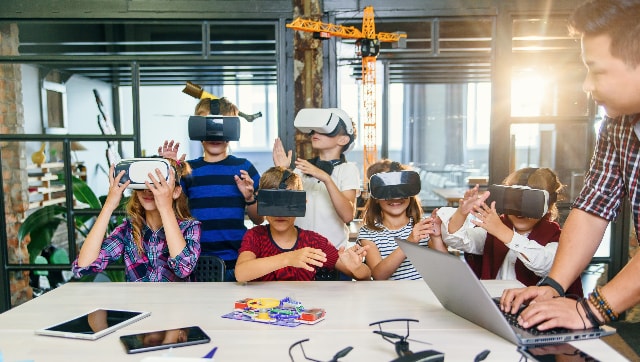Mehul Reuben DasOct 04, 2022 18:21:38 IST
For many people in India, words like blockchain and metaverse are buzzwords, with little to no application, at least in India. Ask anyone working with the EdTech industry though, and you’ll see why many industry insiders are willing to bet big on EdTech platforms, despite the cut-throat competition and several unicorns seeing their valuations reduced.

The introduction of 5G networks and 5G services is expected to ramp up development in a number of fields, like healthcare, logistics, agriculture and insurance. But the one sector where industry experts are a little more bullish than the others is education.
EdTech platforms have truly revolutionised how Indian parents think of education. Whether that has been for the better or for worse, is up for debate. The next big revolution that the education sector will come in the form of a rather unlikely technology — the metaverse.
“Metaverse will bring about a major paradigm shift in how we see education in India,” says Yuvraj Krishan Sharma, the CTO, CPO, and one of the co-founders of Edverse, an EdTech platform who have the first Metaverse classroom in the country.
“Not only are we doing away with the geographical limitations that are present in the current education in our country, but we are also removing economic barriers. Because of Metaverse, we are able to provide a completely decentralised and democratic platform to the students in India to learn, and teachers from across the globe, to teach.”
The Metaverse isn’t the only technology that institutions like Edverse have applied to learning and teaching. EdTech platforms are increasingly introducing learning modules and education content that use 3D assets and Virtual or Augmented Reality. Edverse, who recently raised $700,000 in its initial seed round, already has the largest repository of 3D & 2D asset library, AR/ VR modules in the country.
“One of the biggest holdups in education today, is the nature of the content and how it is delivered,” says Sharma. “The content that most teachers have at their disposal is static and passive. Not all students respond to that, learning has to be captivating and immersive, it has to be something that students can interact and play with. The level of content in the coming years needs to go up exponentially. Hence, gamification becomes important. Learning has become a lot more experiential, and application-based”
While learning may have become more application based and experiential in nature, assessments, especially in schools and even a lot of institutions are theoretical. Essentially, while experiential and application-based education may help students truly learn, scoring marks, is a different ball game altogether. So how do parents and more importantly, schools respond to that?
One of the first schools to have a classroom in Edverse’s Metaverse, was St. Soldier Divine Public School, of Panchkula. “The school was already aware of what a virtual world is and what opportunities it could represent and the potential of the idea, so convincing them to get on board wasn’t really a challenge,” says Sharma.
As for the parents of the children, Sharma, believes that they have had an epiphany in the last couple of years. “Parents today have come realise that marks don’t matter that much, what matters is whether their children are getting an education, whether they really are learning something. They have realised that the current system of education cannot ensure that their children will have the necessary skillsets 15 years down the line. What is important is that they have to be early adopters to technology, only then will they remain relevant,” he says.
One challenge that arises with more complex technology getting into the education system, is that most educators and teachers do not necessarily have the technical know-how to use these technologies to their fullest potential. Teachers need to be trained for the Metaverse, admits Sharma.
But EdTech platforms also have to make it easy for them. “Of course there is a generational gap, but the way to counter that is to make the UI or user interface and the UX or the user experience as simple as we can. We start with something as easy as using a browser-based application. Only then can we make education truly decentralised.”
Post a Comment